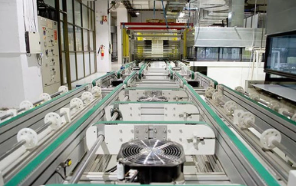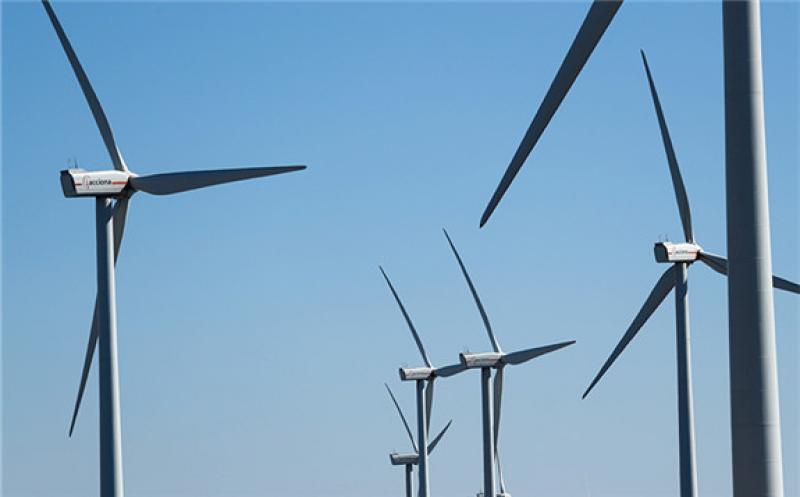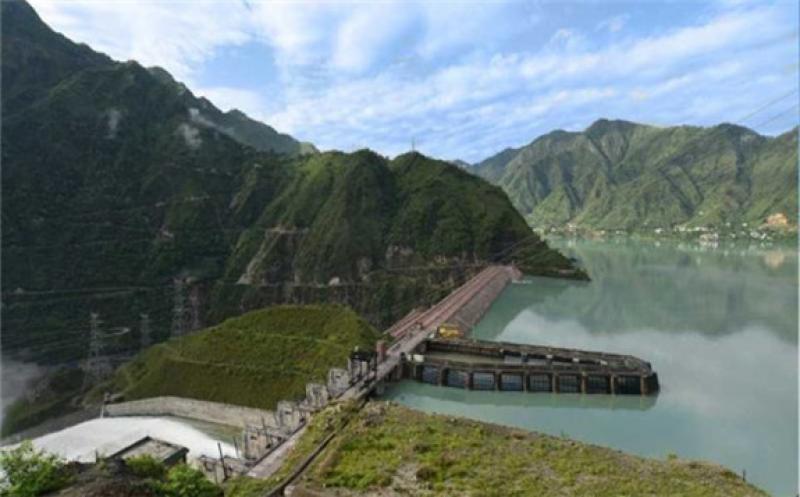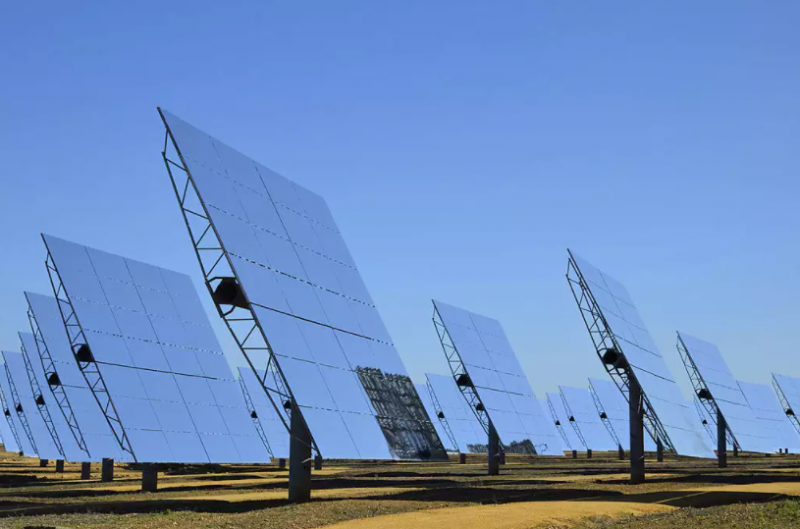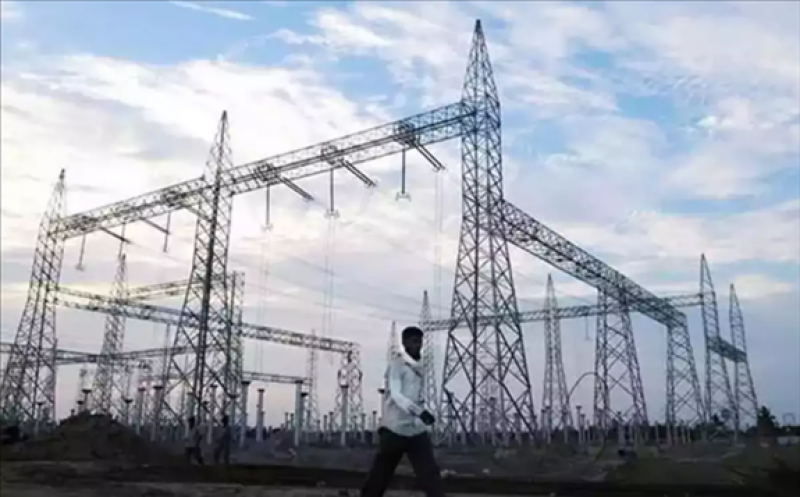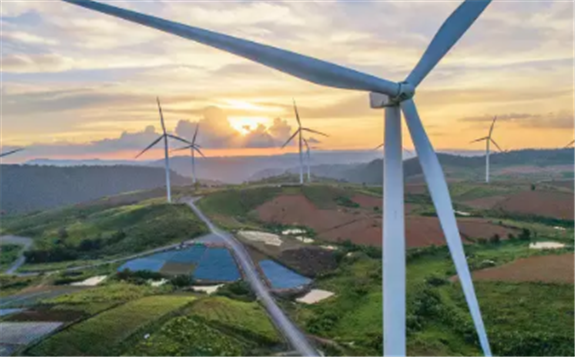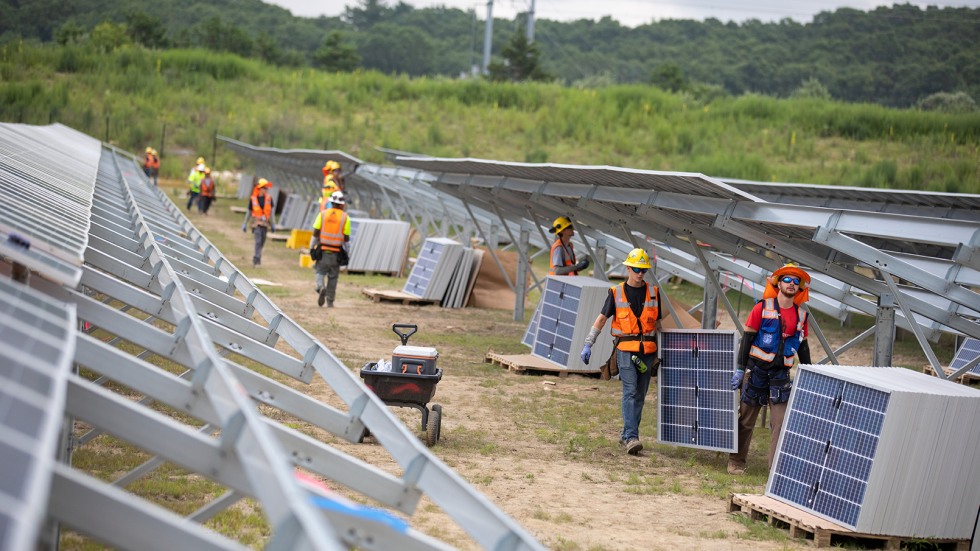
MN8 Energy announced it has completed the Dry Bridge Solar facility, helping Brown University pursue its goal of net-zero greenhouse gas emissions on campus by 2040. The state of Rhode Island has a separate goal of an emissions-free electricity grid by 2030.
The project is comprised of four co-located 10 MW solar facilities, all located on a rehabilitated brownfield site in North Kingstown, Rhode Island. The land was previously used for gravel and sand extraction. Installation of the project began in 2021, leading to the installation of 117,210 solar panels and planting of native vegetation for pollinators on the brownfield site.
The project is expected to provide roughly two-thirds of the university’s electricity needs, providing power to its 231 campus buildings.
Located on a 240-acre field at the site of a former gravel pit, Dry Bridge is among the state’s highest-capacity contiguous solar generation projects, on track to generate 66.8 million kWh of power annually.
MN8 Energy has a portfolio of 4 GW of operational and under construction solar projects and 1.1 GWh of battery storage capacity comprised of over 875 projects across 28 states, as well as EV charging in 6 states.
Key counterparties include CS Energy, a solar engineering, procurement, and construction firm, and Energy Development Partners, a Rhode Island-based renewable energy developer.
Brown University will source power from the facilities, providing predictable energy costs and net metering credits, while safeguarding against market volatility that can account for a significant portion of a university’s operational expenses.
“The project underscores the need to ensure the University does all it can — through our physical plant and our leading-edge environmental research and scholarship — to contribute to global efforts to seek climate solutions and combat the threats posed by climate change,” said Christina Paxson, president, Brown University.
The project required the construction of a new power substation across from the Wickford Junction train station in North Kingstown, and new underground and overhead lines to transmit power from the project site.
“The lines carrying the energy from the site to the new substation are the highest-distribution voltage available in the state, and it took a lot of time to manage installation of the lines, both underground and overhead and along state roads, secure state permits, and manage the design and installation of the immense amount of infrastructure improvements in coordination with Narragansett Electric,” said Frank Epps, chief executive officer, Energy Development Partners.
The project faced several delays and regulatory hurdles, including substantial challenges around interconnection service agreements, an issue encountered by many renewable energy developers across the state.
It took more than two years to successfully navigate and align state regulations with regional regulations managed under Federal Energy Regulatory Commission, before construction could begin, in part due to the unprecedented size and scope of the project.
“During two years of negotiations, all of the project partners, regulatory agencies and the utility worked together, and the project ultimately received the necessary authorizations to interconnect,” said Al Dahlberg, associate vice president for government relations at Brown. “It was an undertaking that took a tremendous amount of effort, patience and collaboration to accomplish.”
